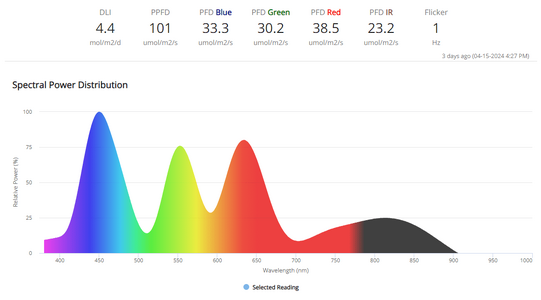I have a couple PAR meters and TBH, they're fairly useless with today's grow lights.
They can tell you where the limits of your light are at and what the best height to hang and that's about it. You can do the same thing measuring lux or lumens and converting the numbers. They used to be great for knowing when an HID lamp was in decline but that's not applicable to LED and especially not with the LED that have adjustable channels.
If you really want to know what your light is doing and what it can do you want something like the Pulse Pro. It will give you info like PPFD or PAR, convert it to DLI and also give you the spectral breakdown of each color percentage.
Really the only thing a par meter will do is give you whatever the highest PPFD measurement might be but it wont tell you which color or colors make up that measurement.
For example, I put my PAR meter under a custom t5ho array and it reads 207umol. IDK if it's high in blue or red. I just have a vague reading that says 207 and it's accuracy is questionable.

But with the Pulse Pro, I get all this info which is actually useful

+ it also measures CO2, VPD, light %, temp, rh, dew point, and air pressure so you get the whole enchilada of room data for the $450 asking price.
IMO if a grower wants this data, save up for it and don't go cheap with just a regular PAR meter. You'll be better of in the end and have zero doubts about what your lights and room are doing.
If not willing to go that extra mile, a simple $20 lux meter and conversion chart or app on a phone will tell you roughly the same thing any $250 par meter will tell you




